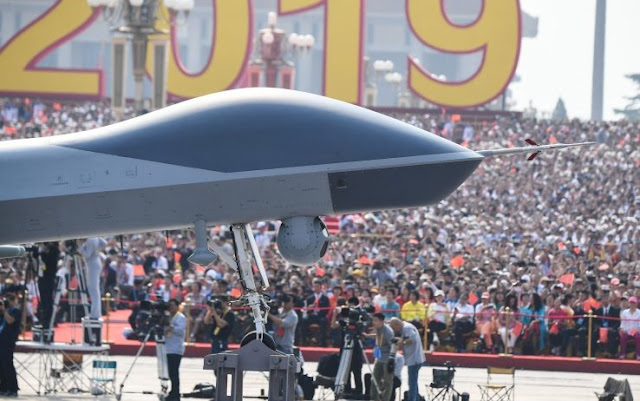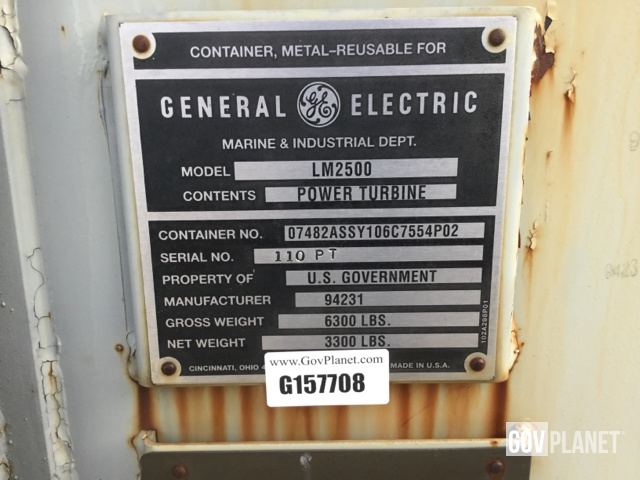I 70 anni del “regime” (un mix tra capitalismo di stato e marxismo): la Cina rivela al pubblico droni, missili e veicoli ipersonici alla parata militare.
La Cina ha presentato per la prima volta nuovi tipi di missili e piattaforme non presidiate ad una parata militare nella sua capitale il 1° ottobre 2019 in occasione del 70° anniversario della sua fondazione.
Le tecnologie non presidiate (UAV - UCAV - UUV) includevano un grande veicolo subacqueo senza pilota, insieme ad un velivolo senza pilota ad alta velocità ritenuto capace di volo supersonico.
Tuttavia, sono stati i missili a prendere il centro della scena - non sorprende che la People's Liberation Army Rocket Force, o PLARF, sarà un attore centrale in qualsiasi futuro conflitto che coinvolga la Cina.
Il missile balistico intercontinentale autocarrato DF-41 e il missile balistico lanciabile da sottomarini JL-2 hanno fatto il loro debutto alla parata in piazza Tienanmen a Pechino, rappresentando il TOP della deterrenza nucleare cinese.
L'agenzia di stampa statale cinese Xinhua ha detto che i 16 lanciatori “DF-41“ in parata provenivano da due brigate PLARF, mentre i 12 lanciatori montati su camion “JL-2” mostrati alla parata rappresentavano la potenza nucleare imbarcati su sei sottomarini di missili balistici “Jin-class”.
La più grande sorpresa della sfilata è stata l'apparizione del veicolo ipersonico “DF-17”, o HGV. Il DF-17 consiste in un booster standard di missili balistici per il suo primo stadio. Il secondo stadio è un proiettile per la bassa quota utilizzato per attaccare un bersaglio dopo il rientro balistico del primo stadio.
I rapporti che citano fonti del governo degli Stati Uniti hanno detto che la Cina ha effettuato diversi test del DF-17, dal 2014 ad oggi. Il DF-17 è il primo sistema di questo tipo conosciuto per essere operativo nel mondo, anche se molte altre nazioni, compresi gli Stati Uniti, stanno sviluppando sistemi simili.
Alla parata hanno debuttato anche una coppia di sistemi di aerei cinesi senza pilota. Il primo di questi è stato lo “Sharp Sword”, UAV da combattimento. L'esemplare mostrato in parata presentava nuovi ugelli del motore, in contrasto con le foto precedenti che mostravano un equivalente più convenzionale e meno stealth.
L'altro drone al suo debutto è considerato una piattaforma ad alta velocità. Ritenuto capace di raggiungere il volo supersonico, il tipo, che è stato indicato come “WZ-8”, ha compiuto il suo primo volo nel 2015 ed è ritenuto idoneo al lanco da un aereo come il bombardiere Xi'an H-6N.
Le foto della parata confermano suggeriscono che la velocità è la priorità per la nuova arma, utile per missioni di ricognizione o per attaccare un bersaglio di alto valore.
La parata ha visto anche il debutto del grande veicolo subacqueo senza equipaggio “HSU001”, con due sistemi montati su rimorchi. Ogni veicolo è alimentato da due eliche e sembra essere in grado di montare una varietà di carichi utili, comprese le ottiche montate sull’albero.
ENGLISH
China unveils drones, missiles and hypersonic glide vehicle at military parade
China has showcased new types of missiles and unmanned platforms for the first time at a military parade in its capital on Oct. 1 to mark the 70th anniversary of its founding.
The unmanned technologies included a large unmanned underwater vehicle, along with a high-speed unmanned aircraft believed to be capable of supersonic flight.
However, it was the missiles that took center stage — unsurprisingly given that the People’s Liberation Army Rocket Force, or PLARF, will be a central player in any future conflict involving China.
As previously reported by Defense News, the road-mobile DF-41 intercontinental ballistic missile and the JL-2 submarine-launched ballistic missile each made their debut at the parade in Beijing’s Tiananmen Square, representing the survivability of China’s nuclear deterrence.
China’s state-run news agency Xinhua said the 16 DF-41 transporter-erector-launchers at the parade came from two PLARF brigades, while the 12 JL-2 truck-mounted canisters at the parade represented the striking power of each of China’s projected force of six Jin-class ballistic missile submarines.
The biggest surprise at the parade was the appearance of the DF-17 hypersonic glide vehicle, or HGV. The DF-17 consists of a standard ballistic missile booster for its first stage. The second stage is a low-flying projectile used to attack a target following the first stage’s ballistic reentry.
Reports citing U.S. government sources have said China has carried out several tests of HGVs, including the DF-17, since 2014. The DF-17 is the first system of its type known to be operational in the world, although several other nations including the U.S. are developing similar systems.
Also making their respective debuts at the parade were a pair of Chinese unmanned aircraft systems. The first of these was the Sharp Sword low-observable combat UAV. The example displayed at the parade featured a new stealthy engine intake and engine nozzles, in contrast to earlier photos showing a more conventional and less stealthy equivalents.
The other drone making its debut is believed to be a high-speed platform. Believed to be capable of attaining supersonic flight, the type, which has been referred to as the WZ-8, reportedly made its first flight in 2015 and is suspected in some quarters to be capable of launching from another aircraft such as the Xi’an H-6N bomber.
Photos from the parade confirm that this UAS is powered by a pair of rockets instead of an air-breathing engine, and suggests that speed is the priority for the design, possibly for reconnaissance missions or for attacking a high-value target.
The parade also saw the debut of the HSU001 large unmanned underwater vehicle, with two systems mounted on trailers. Each vehicle is powered by two propellers and appear to be able to mount a variety of payloads including mast-mounted optics, although little else is known.
(Web, Google, Wikipedia, You Tube)













































































